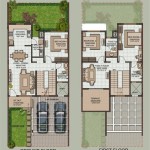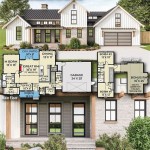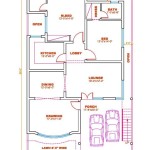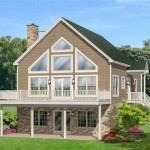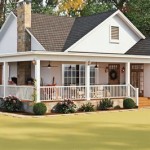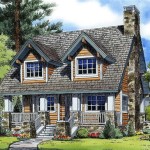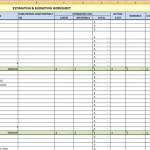Floor Plans For Tiny Houses On Wheels NYC 2024
The year 2024 witnesses a continued surge in interest surrounding tiny houses on wheels, particularly within and around New York City. While stringent regulations and space constraints pose unique challenges, the allure of minimalist living, coupled with the desire for homeownership affordability, drives the search for innovative and compliant floor plans. This article explores the critical aspects of designing floor plans for tiny houses on wheels that aim to navigate the complexities of the NYC metropolitan area in 2024, focusing on space optimization, regulatory compliance, and practical considerations for urban living.
The tiny house movement, initially fueled by environmental consciousness and a rejection of overconsumption, finds a new dimension in the context of urban environments. In a city like New York, where housing costs are exorbitant and square footage comes at a premium, the appeal of a tiny house on wheels extends beyond philosophical ideals. For many, it represents a pragmatic solution to achieve homeownership, downsize, or create a flexible living space. However, the practical application of this concept in NYC requires meticulous planning and adherence to local regulations, which are often geared towards more traditional housing structures.
Understanding NYC Regulations for Tiny Houses on Wheels
The primary hurdle for tiny house enthusiasts in NYC is the city's strict building codes and zoning regulations. While the city hasn't specifically outlawed tiny houses on wheels, they are not explicitly permitted either. The main challenge lies in the definition of a "dwelling." NYC building codes typically require dwellings to be permanently affixed to a foundation, connected to municipal utilities (water, sewer, electricity), and meet specific safety and habitability standards. Tiny houses on wheels, by their nature, often deviate from these requirements.
Furthermore, zoning regulations dictate the types of structures allowed in specific areas. Residential zones typically require minimum square footage and setback distances from property lines, which can be difficult to reconcile with the dimensions and mobility of a tiny house on wheels. The ability to park or house a tiny house on wheels in an urban environment also depends on local ordinances regarding vehicle parking and overnight occupancy. It's crucial to thoroughly research and understand the specific regulations governing the area where the tiny house is intended to be located.
One potential avenue for navigating these regulations is to classify a tiny house on wheels as a recreational vehicle (RV). RVs are subject to different regulations than permanent dwellings, and campgrounds or RV parks are often designed to accommodate them. However, even in this case, there may be restrictions on long-term occupancy or the suitability of the location for year-round living. It’s important to note, even if classified as an RV, parking your tiny house on wheels on city streets or private property for extended periods is generally prohibited without proper permits and adherence to parking regulations.
Another possibility involves exploring the utilization of existing accessory dwelling unit (ADU) ordinances. Some jurisdictions in the greater NYC area may have adopted or are in the process of adopting ADU regulations. While ADU regulations often focus on permanent structures, there might be potential for adapting or interpreting them to include tiny houses on wheels under specific circumstances. Thorough investigation of local government websites and consultations with planning officials are essential for gaining clarity on these evolving regulations.
Optimizing Space in Tiny House Floor Plans
Given the limited square footage inherent in tiny houses on wheels, space optimization is paramount. The floor plan must be carefully designed to maximize functionality and create a comfortable and efficient living environment. Multi-purpose furniture, vertical storage solutions, and thoughtful layout strategies are key to achieving this goal.
One common approach is to incorporate loft spaces for sleeping. This frees up valuable floor space for living, cooking, and bathroom areas. However, designers must consider the headroom in the loft and ensure that it is adequate for comfortable movement. Ladders or narrow staircases can provide access to the loft, but staircases take up more space. Hidden storage under stairs becomes a great option. The choice between a ladder and a staircase depends on individual needs and preferences, as well as the overall dimensions of the tiny house.
Kitchens in tiny houses necessitate compact appliances and efficient storage solutions. Combination appliances, such as convection oven/microwave units, can save valuable counter space. Pull-out drawers, vertical shelving, and wall-mounted organizers can maximize storage capacity. Sinks with cutting board inserts and folding countertops can provide additional workspace when needed. Emphasis should be placed on minimizing clutter and keeping frequently used items within easy reach.
Bathrooms in tiny houses present unique design challenges. Composting toilets are a popular choice as they eliminate the need for a traditional septic system. Shower stalls can be compact and utilize space-saving features such as folding doors or shower curtains. Wall-mounted sinks and vanities can create a more open feel. It's crucial to ensure adequate ventilation in the bathroom to prevent moisture buildup and mold growth.
Living areas in tiny houses should be designed to be flexible and adaptable. Multi-purpose furniture, such as sofa beds or convertible tables, can transform the space from a living room to a bedroom or dining area. Built-in seating with storage underneath can maximize space utilization. Large windows can bring in natural light and create a more spacious feel. Thoughtful placement of furniture can define different zones within the tiny house without the need for walls or partitions.
Practical Considerations for Urban Tiny House Living
Beyond regulatory compliance and space optimization, several practical considerations are crucial for successful tiny house living in an urban environment like NYC. These considerations relate to mobility, utilities, and the overall integration of the tiny house into the urban landscape.
Mobility is a defining characteristic of tiny houses on wheels, but navigating urban streets and parking restrictions can be challenging. The dimensions of the tiny house must comply with legal limits for trailers and vehicles. Transportation logistics, including permits, towing vehicles, and parking locations, should be carefully planned in advance. The ability to easily move the tiny house can be advantageous for accessing different areas of the city or relocating to a new location if necessary.
Utility connections are essential for comfortable and sustainable tiny house living. While some tiny houses rely on off-grid systems, such as solar panels and water tanks, connecting to municipal utilities is often desirable in an urban environment. This requires access to water, sewer, and electricity hookups. In some cases, it may be possible to connect to existing utilities on a property, but this requires permission from the property owner and compliance with local regulations. Alternatively, utilizing an RV park or campground with utility hookups may be a viable option.
Integrating a tiny house into the urban landscape requires careful consideration of aesthetics and neighborhood compatibility. The exterior design of the tiny house should be visually appealing and blend in with the surrounding architecture. Maintaining a clean and well-maintained appearance is essential for avoiding complaints from neighbors and ensuring compliance with local codes. Consider incorporating design features that enhance the visual appeal of the tiny house, such as siding that matches the surrounding houses or landscaping that complements the urban environment.
Furthermore, community engagement is crucial for fostering positive relationships with neighbors. Communicating openly about the tiny house project and addressing any concerns can help to build goodwill and prevent conflicts. Participating in local community events and being a responsible member of the neighborhood can contribute to the long-term success of tiny house living in an urban environment. Sharing information and experiences with other tiny house enthusiasts can also help to create a supportive network and promote the acceptance of alternative housing solutions.
The design of a tiny house for NYC must also consider the weather extremes that the region experiences. Robust insulation is essential for maintaining a comfortable temperature during cold winters and hot summers. Energy-efficient windows and doors can help to minimize energy consumption. A well-designed ventilation system is necessary for preventing moisture buildup and ensuring proper air circulation. The roof should be designed to withstand heavy snow loads and strong winds. These considerations are crucial for creating a durable and livable tiny house that can withstand the challenges of the urban climate.

Customize Your Tiny Home Design

Tiny House Plans For Families The Life

Tiny House Plans For Families The Life

Free Tiny House Plans Tumbleweed Houses

12 X 32 Tiny Home Designs Floorplans Costs And More The Life

12 X Tiny Home Designs Floorplans Costs And More The Life

Free Tiny House Plans Tumbleweed Houses

14 X 40 Tiny Home Designs Floorplans Costs And More The Life

Gooseneck Tiny Homes Living

Little Houses
Related Posts

